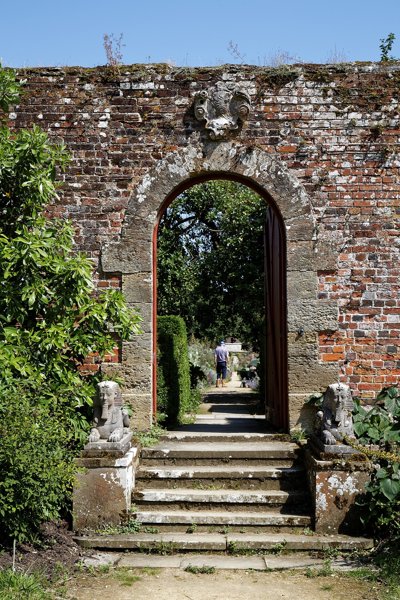 Access to walled garden at Parham House, West Sussex
Access to walled garden at Parham House, West Sussex
By Acabashi - Own work, CC BY-SA 4.0, LinkParham Park is an Elizabethan house and estate in the civil parish of Parham, near Pulborough in West Sussex. The estate was originally owned by the Monastery of Westminster and granted to Robert Palmer by King Henry VIII in 1540.
The gardens consist of beautiful Pleasure Grounds and a four-acre Walled Garden. There are stunning herbaceous borders, a glasshouse, vegetable garden, orchard and a 1920s Wendy House. It is certain that the Garden pre-dates the House – it is thought the land was first cultivated as far back as the 14th century by its owners, monks from the monastery of Westminster.
The site’s open aspect, sheltered by the South Downs, would no doubt have made it an appealing location with a productive fruit and vegetable garden. The garden is now run on organic principles, producing its own compost and is able to be self-sufficient, providing enough mulch and rich compost for the entire site. The Garden Shop and Nursery has over 220 herbaceous perennials on sale, grown and hand tended on site by the garden team.
Parham is one of the country’s finest Elizabethan Houses, complete with a Great Hall and Long Gallery. Its tranquillity and timeless beauty have changed little over the centuries. The Pearsons found it in a dilapidated state of repair and employed the architect Victor Heal to help them carry out a major renovation and conservation of the building during the 1920s and 1930s. They researched meticulously the architectural features they found, restoring them using traditional methods of craftsmanship. The many rare and precious collections of paintings, furniture, needlework and antiquities were collected over a period of 60 years by Mr and Mrs Pearson, and subsequently their daughter, Veronica Tritton. Their guiding principle, aside from acquiring some of the original furniture and effects, was to add to the house in a sympathetic, sensitive and inspiring manner.
Parham has perhaps the finest and most important collection of seventeenth century embroidery in the country. Other areas of the house include the Great Parlour, Saloon, West Room, Ante Room, Ship Room and Green Room.
